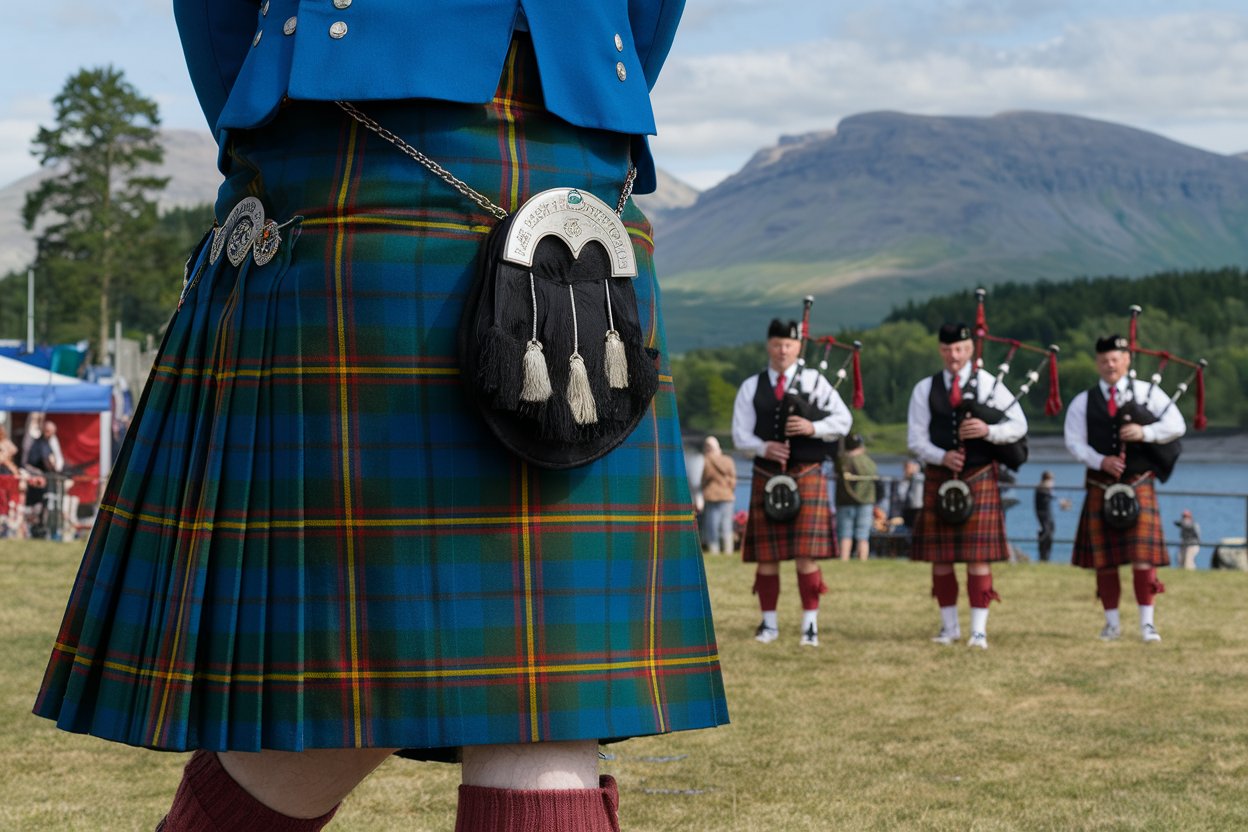
January 9, 2025
Best Kilts in Scottish Festivals and Events for 2025
Kilts are more than just a piece of clothing in Scotland; they are a cultural icon, steeped in history and tradition. Over centuries, kilts have become synonymous with Scottish identity, finding a prominent place in festivals, ceremonies, and everyday expressions of heritage. Whether worn to honor ancestral clans or as a statement of national pride, kilts are an enduring symbol of Scotland’s rich cultural tapestry. In this article, we delve into the history, significance, and evolving role of kilts in Scottish festivals and events.
Symbol of Heritage and Identity
Kilts are more than just garments in Scotland; they are deeply rooted in the cultural and historical identity of the Scottish people. Their origins can be traced back to the 16th century, when they emerged as practical attire for Highland men. The design of the kilt was not merely functional but also symbolically significant. Crafted from tartan fabric, each kilt’s pattern represented a specific clan, family, or region, allowing individuals to proudly display their lineage.
A Connection to Ancestry
Wearing a kilt is an act of paying homage to one’s ancestors. Each tartan tells a story, acting as a visual marker of familial and regional identity. For many Scots, the act of donning a kilt is deeply personal and emotional, linking them to centuries of history and tradition. In modern times, this connection is not limited to Scotland; people of Scottish descent across the globe wear kilts to honor their heritage and reconnect with their roots during festivals, ceremonies, and clan gatherings.
A Symbol of Defiance and Resilience
Kilts also hold a storied place in Scotland’s history of defiance and resilience. After the Jacobite uprisings in the 18th century, the British government banned kilts and other Highland dress under the Dress Act of 1746. This suppression of Highland culture made the kilt a symbol of resistance. When the ban was lifted decades later, kilts experienced a resurgence, reclaiming their place as a proud emblem of Scottish identity.
Kilts in the Global Context
Today, kilts have become synonymous with Scotland itself, serving as a universal symbol of the country’s culture. They are celebrated not only within Scotland but also in international communities, where they are proudly worn during festivals, parades, and cultural events. Even for those without Scottish ancestry, kilts evoke a sense of admiration and respect for the country’s rich history and traditions.
A Timeless Icon
The enduring popularity of kilts is a testament to their cultural significance. Whether worn at formal occasions like weddings or casual gatherings at festivals, kilts remain a versatile and timeless expression of Scottish heritage. Modern innovations in kilt designs, fabrics, and styles ensure that this iconic garment continues to be cherished by future generations while staying relevant in contemporary fashion.
In essence, kilts are not just articles of clothing—they are a proud declaration of Scottish heritage, embodying a legacy of community, resilience, and tradition that continues to inspire people worldwide.
Prominent Scottish Festivals Featuring Kilts
Highland Games
The Highland Games are among the most iconic Scottish Festivals, held annually in various towns and villages. These games celebrate Scottish traditions through athletic competitions, music, and dance. Participants and spectators alike don kilts, often showcasing tartans unique to their clans.
Key highlights include:
- Traditional Music: Bagpipers dressed in kilts provide a melodious backdrop.
- Dancing: Highland dancers perform intricate routines in kilts, enhancing the visual appeal.
- Clan Gatherings: Families wearing their tartans come together to celebrate shared heritage.
Burns Night
Every January 25th, Scottish Festivals to commemorate the life and works of Robert Burns, Scotland’s national poet. Burns Suppers feature poetry recitations, traditional Scottish dishes, and, of course, kilts. Attendees often wear kilts paired with sporrans, jackets, and ghillie brogues, elevating the evening’s formal yet festive mood.
Hogmanay (Scottish New Year)
Hogmanay, Scotland’s New Year celebration, is a grand affair marked by lively street parties, torchlight processions, and fireworks. Kilts are a popular choice for both locals and visitors during these festivities. The garment’s presence enhances the celebratory atmosphere, embodying Scottish pride and tradition as revelers ring in the new year.
St. Andrew’s Day
St. Andrew’s Day, observed on November 30th, is Scotland’s national day. Events range from parades and ceilidhs to solemn church services, with kilts playing a central role. Wearing a kilt on this day signifies respect for Scotland’s patron saint and a celebration of national pride.
Weddings and Formal Ceremonies
Kilts are a staple at Scottish weddings and formal gatherings. From the groom to the guests, kilts add a touch of elegance and tradition. Accessories like kilt pins, sporrans, and belts complete the ensemble, creating a dignified look that honors Scottish heritage.
Beyond Festivals: Kilts in Popular Culture
Kilts in Music and Entertainment
Kilts often make appearances in Scottish music performances and global entertainment events. Famous bands and solo artists, particularly those playing bagpipes or Celtic music, frequently wear kilts to showcase their Scottish roots. This extends the influence of kilts beyond festivals, into the realms of art and pop culture.
International Celtic Celebrations
Kilts are a common sight at international Celtic festivals, such as those held in the United States, Canada, and Australia. These events celebrate Scottish and Irish culture, where kilts play a unifying role in showcasing shared heritage.
Cultural Significance Beyond Clothing
Connection to Clans
Kilts serve as a visual representation of clan unity. During events like the Highland Games, families wearing the same tartan pattern come together to celebrate their shared history and bonds.
Expression of National Pride
For Scots, wearing a kilt is a proud declaration of their cultural identity. The garment’s presence at international events, such as Celtic festivals and Highland gatherings abroad, showcases Scotland’s traditions to a global audience.
Modern Adaptations and Global Influence
Kilts have evolved to stay relevant in the modern era while preserving their traditional essence.
Contemporary Styles
Modern kilts feature:
- Alternative Fabrics: Beyond wool, kilts are made from leather, denim, and even synthetic materials.
- Bold Designs: Modern tartans and patterns cater to diverse fashion preferences.
These adaptations ensure that kilts appeal to younger generations and international enthusiasts. Additionally, kilts have gained popularity worldwide, often worn at Celtic-themed weddings, cultural festivals, and even fashion runways.
Conclusion
Kilts are more than just clothing; they are a living testament to Scotland’s history, culture, and identity. From the Scottish Festivals Highland Games to Burns Night and Hogmanay, kilts add authenticity, pride, and color to every Scottish celebration. Whether worn by locals or visitors, kilts continue to be a cherished symbol of unity, tradition, and national pride. Their evolving styles ensure that this iconic garment remains relevant for generations to come, connecting people to Scotland’s rich cultural heritage.




